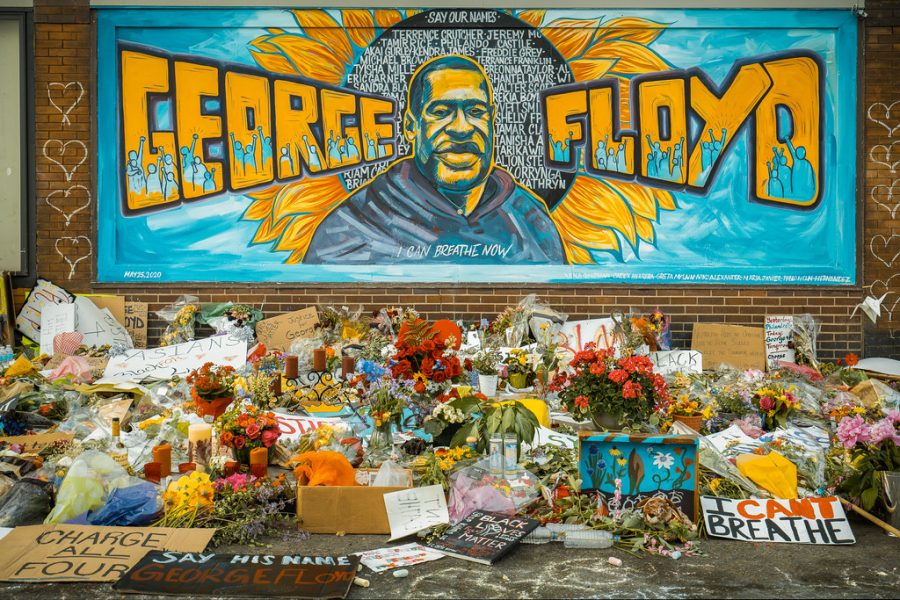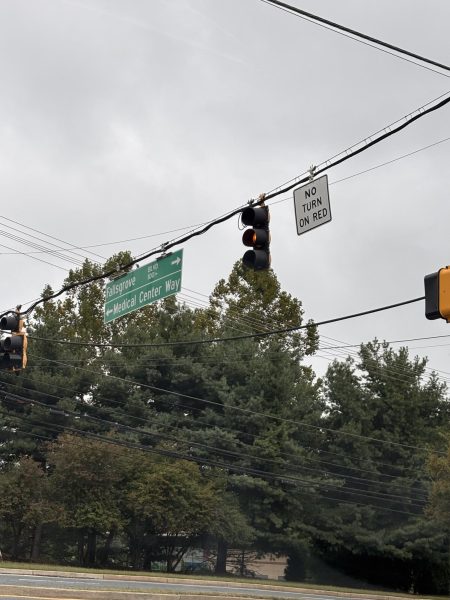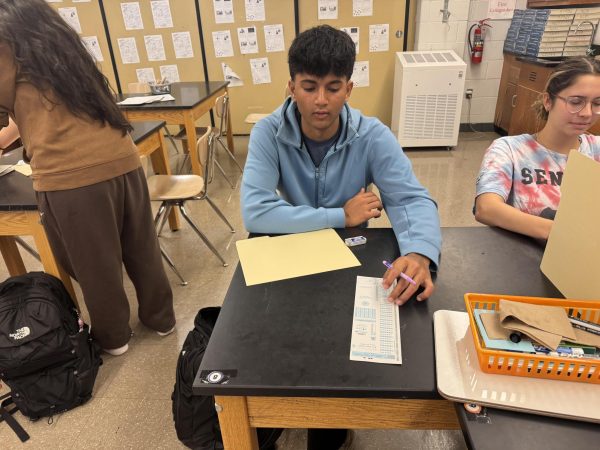Derek Chauvin found guilty for murder of George Floyd
Photo by chaddavis.photography used with permission from Google Commons
A George Floyd mural located in Minneapolis near the location of Floyd’s murder.
On May 25, 2020, 17-year-old Darnella Frazier was walking with her cousin to a local convenience store when she witnessed George Floyd, a Black man, being arrested by four police officers. Frazier recorded Floyd’s death on her phone, and posted the video on her Facebook. Little did she know that the video would amass millions of views, as well as spark nationwide protests against police brutality and racism.
Frazier would later testify in the murder trial of Derek Chauvin, the white police officer who was found guilty on all counts for the death of Floyd. In her video, Chauvin is seen kneeling on Floyd’s neck while Floyd begs for air. Floyd was being arrested by police for suspicion of using a counterfeit bill, when Chauvin used unnecessary force to restrain Floyd. As a result of this restraint, Floyd went into cardiac arrhythmia due to low oxygen levels, which caused his heart to stop. “It’s been nights I stayed up apologizing and apologizing to George Floyd for not doing more and not physically interacting and not saving his life,” Frazier said, according to the New York Times.
During the three-week trial, Minneapolis Police Department Chief Medaria Arrandondo, as well as other members of his department, testified against Chauvin, stating that Chauvin’s physical restraint of Floyd violated the department’s policies on use of force. Arrandondo explained that force can be considered reasonable when first trying to get him under control, but in the case of Floyd, who stopped resisting, said force becomes unreasonable. “But once there was no longer any resistance, and clearly when Mr. Floyd was no longer responsive and even motionless, to continue to apply that level of force to a person proned out, handcuffed behind their back — that in no way, shape or form is anything that is by policy, is not part of our training and is certainly not part of our ethics or our values,” Arrandondo said, according to National Public Radio.
Another topic discussed during the trial was the cause of Floyd’s death. Chauvin’s defense argued that Floyd’s previous heart condition, combined with the drug Fentanyl, as well as carbon monoxide poisoning from the squad car exhaust, contributed to his death. On the contrary, testimony from Hennepin County’s medical examiner Dr. Drew Baker claimed that Floyd’s death was caused by cardiopulmonary arrest, which was due to neck compression. Baker came to the conclusion that Floyd’s death should be deemed a “homicide,” which meant that someone else was involved in his death, that person being Chauvin. Other medical examiners also testified that the cause of death was due to cardiac arrest, although they did not all agree that this case should be deemed a “homicide.” “Mr. George Floyd died from a cardiopulmonary arrest. It was caused by low oxygen levels. And those low oxygen levels were induced by the prone restraint and positional asphyxiation that he was subjected to,” cardiologist Dr. Jonathan Rich said, according to National Public Radio.
On Apr. 20 Chauvin was found guilty of unintentional second-degree murder, third-degree murder and second-degree manslaughter. Collectively, he could spend up to 75 years in prison. Since the verdict, there have been multiple reactions, some positive, some negative. The result of this trial has not only brought justice for Floyd’s family, but has also become a stepping stone for ending police brutality and systemic racism. “True justice requires that we come to terms with the fact that Black Americans are treated differently, every day,” former President Barack Obama said.
Your donation will support the student journalists of Thomas S. Wootton High School. Your contribution will allow us to purchase equipment and cover our annual website hosting costs.
Sarah is a 2023 graduate.







